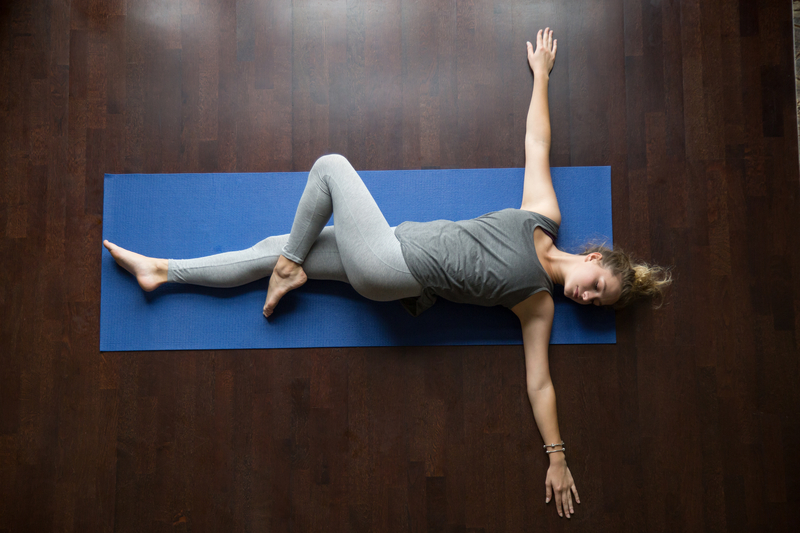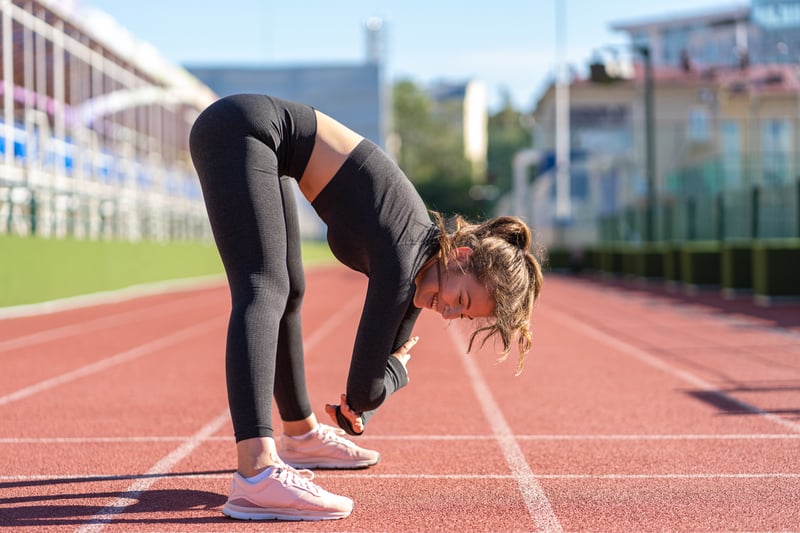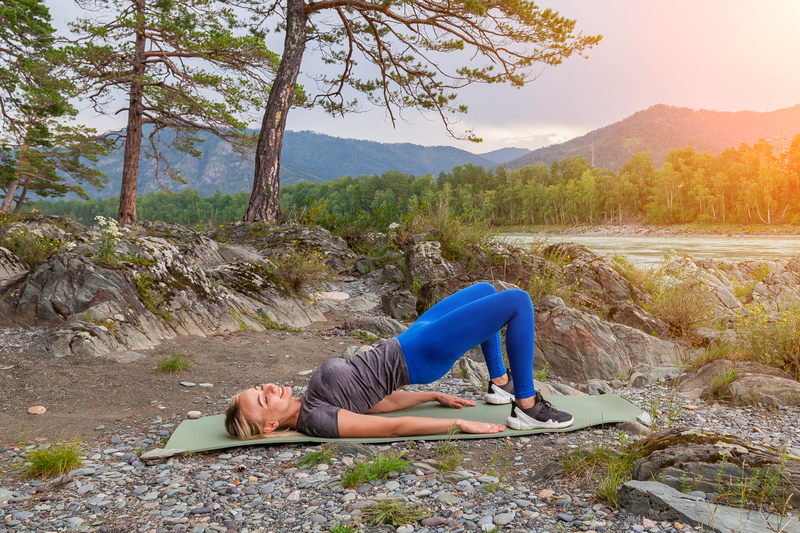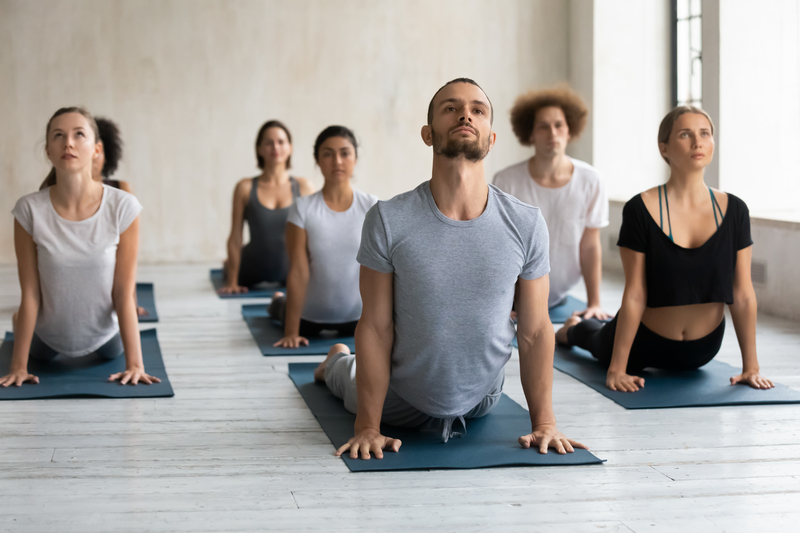9 Best Stretches to Help Relieve Lower Back Pain

It seems like everyone you know (most likely including yourself) has some type of back pain, and it’s usually lower back pain. But, there’s good news! There are stretches for lower back pain that can really help alleviate this nagging problem when done on a regular basis.
Of course, if you have an injury or your low-back pain is due to something else, you may need to enlist the help of a doctor, physical therapist, or other health practitioner. But many of us can find relief by doing a few simple movements at home.
Why Do We Get Lower Back Pain?
Back pain is very common and can creep up on you over time due to things like bad posture, too much sitting, too many repeated jarring motions (like sports injuries, for example), arthritis and other degenerative disc diseases, curvature of the spine, and more.
It’s also relatively easy to injure your back with a sudden movement, a traumatic fall, twisting while lifting, or an accident.
That said, your back may also hurt for other reasons. For example, you need to stretch, or you need to strengthen your abdominal muscles. Any weakness or imbalance in your trunk can manifest as lower back pain, so always be sure to stretch sufficiently (especially the hamstrings) and work the lower back and abs equally.
Other helpful tips for avoiding low back pain include choosing seating with good back support, never lifting heavy objects while twisting at the same time, bending your knees when you try to pick up something heavy instead of rounding your back, and always ensuring you maintain a neutral pelvic position.
Stretches to Help with Lower Back Pain
While it’s always important to see your doctor if you have sudden, severe, or nagging pain, doing these few stretches on the regular may help prevent or lessen some common back pain.
Do these stretches a few times a week after a thorough warmup or after a good workout as a cooldown.
1. Extended Child’s Pose

Start on your hands and knees and place your palms flat on the ground in front of you. Round your back as you push your hips down and back as far as possible until they’re resting on your ankles (or as close as you can get).
If you’re flexible enough, allow your torso to drop between your knees. Stretch out your arms and move your hands as far forward in front of you as you can, allowing for a good stretch through your back and shoulders. If you aren’t yet flexible enough in the shoulders or if this causes discomfort, you can also set your head on a yoga block or firm pillow as your mobility improves.
Relax and allow your back and shoulders to open as you take five deep breaths.
2. Hip (Piriformus) Stretch

Start by lying on your back with your feet flat on the floor and your knees bent. Grab your right leg and bring it up and across your body, so you can place your right foot above your left knee. Lift your left leg off the floor and pull it toward you for a deeper stretch.
Keep your ankles flexed and feel the stretch through the back of your leg, up into your glute and hip. You can also push your right thigh away from you with your right elbow if it feels good.
Relax and take five deep breaths before repeating on the opposite side.
3. Knee to Chest Stretch

Start by lying on the ground and bend your legs to bring your knees up to your chest. Feel a good stretch through your lower back as you hold this stretch. You can also rock side to side if that feels good. Release and repeat.
4. Lying Spinal Twist

Begin by lying on your back with your legs outstretched and your arms out to your sides. Keeping your left leg straight, bend your right leg and bring it across your body to get a good stretch through your right side. Move your leg back to the starting position and repeat the entire process on the left side.
5. Cat/Cow Stretch
This stretch will have you move through stretching your back as well as stretching your chest and abdominal region. Begin on your hands and knees. Blow out all your breath as you round your back as much as you can, feeling a good stretch not only through your spine, but your shoulders and arms as well. Keep your head down and feel a stretch through the back of your neck.
Next, move in the opposite direction as you take in a deep breath, filling your lungs to capacity and getting a good stretch through your chest and abs as you now arch your back fully.
6. Standing Hamstring Stretch

This stretch will help loosen up tight hamstrings that are often the culprit when it comes to back pain. Stand with your feet about hip-width or wider apart. Cross your arms in front of your chest and lean forward, pulling your belly button toward your spine as you bend at the waist. Hang and feel and incredible stretch through your lower back and legs. Try slowly moving side to side to enhance the stretch before returning to the standing position.
For a deeper stretch, you can also hold onto your calves.
7. Glute Bridge Stretch

This stretch will help add some mobility to your hips and back. Start by lying on your back with your arms out straight next to your sides with your knees bent. Your feet should be about hip-width apart. Next, lift your hips and press upward, squeezing your glutes as you do so. You can gently pulse in this position to further loosen the area or simply return to the start and repeat.
8. Cobra Stretch

This stretch is mainly to elongate the abdominal region and to loosen and bring blood flow into the lower back region. Start by lying on the floor, face down, and prop yourself up onto your forearms. From here, push upward through your hands, straightening your arms, while keeping the shoulders down, to curl your upper body up and back as you feel a good stretch through the front of your body.
9. Roll-Ups
This Pilates move will simultaneously work your abs and your lower back. Start by lying on a mat with your legs straight and your arms outstretched above your head. Keeping your arms straight, lift your head, chest, and upper body off the ground as your move your outstretched arms up and over to touch your feet. Control your return to the start as you lift your arms back over head and move to lower your body back to the lying position.





 7 Signs Your Body is Seriously Low on Collagen (not just wrinkles)
7 Signs Your Body is Seriously Low on Collagen (not just wrinkles) Health Expert: "Turmeric Doesn't Work (unless...)"
Health Expert: "Turmeric Doesn't Work (unless...)" 3 Warning Signs Your Probiotic Supplement is a Total Waste
3 Warning Signs Your Probiotic Supplement is a Total Waste

